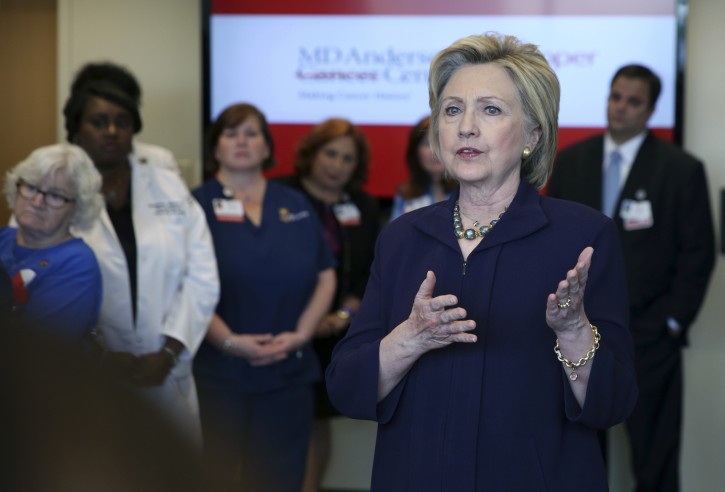
Los Angeles – With the primary season’s biggest prize in play, Hillary Clinton has fashioned a strategy to reprise her 2008 victory in California when she defeated Barack Obama by running up big margins with Hispanics and women. Bernie Sanders is hoping for an upset to sustain his argument to stay in the race.
There is another historical backdrop for Clinton: Her husband locked up his first presidential nomination in the California primary in 1992. This year, the state’s June 7 Democratic primary offers the largest trove of delegates in the nation and gives Clinton the opportunity for a turnaround after Sanders embarrassed her with recent wins in West Virginia and Indiana
She’s got the party’s nomination all but clinched, no matter what happens, but a loss in the Democratic stronghold would be a stinging setback and refresh questions about her electability in November.
Sanders, with only a wisp of a chance of overtaking her delegate lead, concedes he faces a daunting climb.
One sign: On a recent sunny afternoon in Mariachi Square, a landmark in a Hispanic neighborhood east of downtown Los Angeles, campaign organizer Richard Avina was waiting for volunteers to arrive to help him knock on doors.
No one showed up.
Decked out in a Sanders T-shirt, Avina, 24, who left his hospital job to help the campaign, acknowledged the obvious: “It’s been a little rough.”
Still, the Vermont senator said at a rally in Stockton this week that if he can rack up big wins in California and other endgame primaries, “I think you are looking at the Democratic nominee.”
June 7 amounts to a capstone on the primary season — with voting also in New Jersey, Montana, New Mexico and South Dakota. Clinton could lose every state and still become the nominee.
Besides winning here before, the former first lady leads in polling and has a deep team of experienced advisers and organizers, some plucked from her 2008 state campaign and from Obama’s team. Another Clinton edge is with blacks — she has trounced Sanders among black voters in key states like New York and Florida and wants to duplicate that here.
A rally last week in a heavily Hispanic neighborhood east of downtown Los Angeles pointed to her emphasis on the Latino vote, and the campaign Wednesday kicked off a statewide battery of women-to-women phone banks. She recently met with a who’s-who of black pastors and community leaders in Los Angeles.
Sanders, virtually unknown in California at this time last year, enters the final weeks after an internal disagreement over strategy and an abrupt change in top staff. State director Michael Ceraso exited Wednesday, amid a debate over whether more money should be invested in digital and grass-roots organizing or traditional TV ads, the typical way to reach voters in the vast state. Ceraso’s strength is digital organizing. The spot will be filled by Robert Becker, who was the campaign’s director in Iowa, Michigan and New York.
“The campaign wanted to go in a different direction with the California strategy, so we mutually parted ways,” said Ceraso, who had set a staff goal of knocking on 1 million doors before Election Day.
Meanwhile, Sanders’ fundraising has slowed, and the campaign began cutting scores of workers last month. With Clinton eager to save money for the fall, and Sanders’ fundraising slowing, it’s not yet known if voters will witness a last-minute barrage of TV ads.
An independent Field Poll released last month found Clinton had a 64 percent to 25 percent advantage over Sanders with black voters, a 17-point edge with women and a slim margin with Hispanics. Sanders led with men, independents and younger voters, mirroring voting patterns in other states.
Voter registration numbers compiled by research firm Political Data Inc. are encouraging for Sanders: in the first four months this year, registrations for people 25 to 30 years old climbed 181 percent compared to the same period in 2012, the last presidential election. There’s also been a spike with registrations for independents, another group than leans to the senator.
However, a wrinkle in the state’s vote-by-mail rules could undercut that support with independents.
More than half of California voters are expected to vote by mail. But voters must ask local election officials to send them a presidential ballot with their state ballot.
So far, 2.1 million independents have been sent vote-by-mail ballots. But most were sent to homes without a presidential ballot, according to Paul Mitchell with Political Data.
“It really questions the idea that the Democratic Primary is open,” Mitchell said.
As reported by Vos Iz Neias
